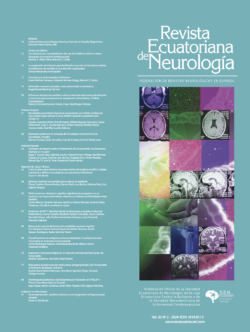Executive functions are a set of higher-order skills involved in the generation, regulation, and effective execution of behaviors to perform goal-directed activities. Given the importance of gender, it is essential to explore how executive functioning contributes to the adaptive behavior of women and men. Therefore, the aim of this study was to evaluate the existing evidence on executive functions in relation to gender. A systematic review of articles published in scientific journals was conducted using the PRISMA method. Selection criteria for the databases, inclusion and exclusion criteria for the studies, and search descriptors were established. Initially, 9277 records were identified, which, after being evaluated for eligibility, were reduced to 24 studies that were included for analysis. Four categories of analysis were established: women<men, women>men, women≠men, women=men. The analysis revealed that, although there is no consensus among the studies, the discrepancy decreases in those reporting that the brain areas and circuits activated in executive functioning differ between genders. The findings are discussed.
Gender
Funciones ejecutivas y género. Una revisión sistemática. Executive functions and gender. A systematic review.
The Effect Modification Of Gender On The Relationship Between Neck Circumference And Obstructive Sleep Apnea In Stroke-Free Older Adults. Efecto Modificador Del Género en la Relación Entre la Circunferencia Del Cuello y la Presencia de Apnea Obstructiva de Sueño en Individuos Añosos Libres de Ictus
Background: Objectives: Studies attempting to assess the association between the neck circumference (NC) and the apnea-hypopnea index (AHI) gave inconsistent results. We aimed to assess the effect modification of gender in the association between the NC and the AHI in stroke-free older adults living in Atahualpa (rural Ecuador).
Methods: The study included 190 stroke-free Atahualpa residents aged ≥60 years who underwent brain MRI, polysomnography, assessment of cardiovascular risk factors, the NC and nasal septum deflection.
Results: The mean age of the study population was 71.1±7.6 years, and 64% were women. The mean NC (37.4±2.6 versus 34±2.5 cm; p<0.001) as well as the mean AHI (14.4±14.5 versus 10.5±11.1 episodes per hour; p=0.039) were greater in men than in women. A fully-adjusted generalized linear model showed significant main effects for NC, gender, and a significant interaction between gender and NC over the AHI (dependent variable). Average AHI increased significantly as NC enlarged, but this change was different in men and women. Men started with lower AHI margins at the 10th percentile of the NC, and while both significantly increased, men had a much larger rate of change in the average AHI. Therefore, at the 90th percentile of NC, men had a larger average AHI than women.
Conclusions: This study shows a significant effect modification of gender in the association between NC and AHI. Differences in cervical fat tissue distribution between men and women probably accounted for such effect.





